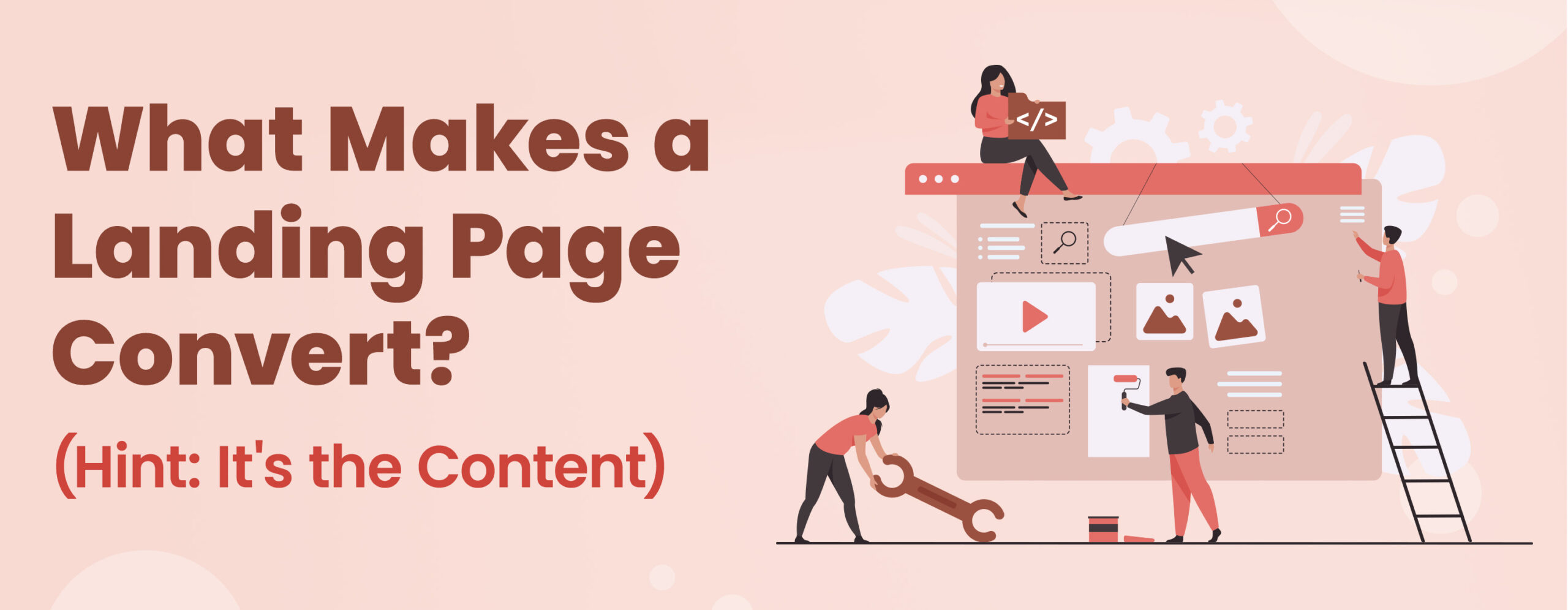
In the premises of digital marketing, where everything keeps evolving and modifying day by day, one thing remains constant is your landing page. It is the ultimate salesperson of your company that holds the attention of your organisation, be it is service-based or product-based. The landing page is a make-or-break factor that determines whether a visitor to your website bounces away or converts into a paying customer.
Primarily, most individuals think that an appropriate landing page should have the most eye-catching visuals or the slickest UX experience ever. However, if the message that you are trying to convey does not resonate with the individuals, then the trust and authority won’t be built, and the conversion will face hindrance.
In this article, we will explore landing pages beyond good design. From tips to create a high-converting landing page to copywriting for landing pages and the landing page best practices to effective CTA examples, we will provide you with a comprehensive guide so you can curate a successful strategy for your landing page.
What Is a Landing Page and Why Does It Matter?
A landing page is a standalone web page designed with a single goal — to convert visitors into leads or customers. Whether you’re driving traffic from an ad campaign, email newsletter, or organic social media, your landing page is where users “land” to take action.
Unlike regular website pages that may contain navigation links, blog content, or multiple CTAs, a landing page is laser-focused. Every word, image, and button should guide the visitor to perform the one action you want them to take.
Landing Page Content That Converts
Design matters, yes. But if your content doesn’t communicate value, build trust, and move the reader emotionally or logically — no amount of visuals will help.
Let’s break down the content elements of landing page content that converts:
1. A Clear, Compelling Headline
Your headline is the hook. Within seconds, it should communicate:
- What the offer is
- Why it matters
- How it benefits the user
Example: “Get 10X More Leads in Just 7 Days – Without Spending Extra on Ads”
Great headlines are specific, benefit-driven, and emotionally compelling. Use power words, numbers, and action verbs whenever possible.
2. Persuasive Subheadline
The subheadline supports your main headline by reinforcing the benefit and providing more context.
“Our data-driven landing page strategies have helped over 300 brands scale their conversions in record time.”
It’s your second chance to keep them engaged — make it count.
3. Value-Driven Body Copy
This is where copywriting for landing pages shines. Your body copy should:
- Identify the user’s problem
- Offer your product/service as the solution
- Build credibility through social proof, stats, or case studies
- Minimize friction and objections
Use short paragraphs, bullet points, and clear benefits. Don’t just describe your offer — sell the outcome.
4. Social Proof and Trust Signals
Testimonials, client logos, media features, case studies, and real stats establish trust and authority.
Also consider adding:
- Security badges
- Money-back guarantees
- Customer reviews
These elements reduce hesitation and boost trust.
Landing Page Best Practices to Follow
While content leads the conversion game, here are key landing page best practices every digital marketer should implement:
1. Single CTA, Multiple Placements
Don’t confuse the user. Focus on one clear call-to-action, but repeat it throughout the page — above the fold, mid-scroll, and at the end.
2. Mobile Optimization
More than 60% of users will visit your landing page on their phones. Ensure your layout, font size, and buttons are thumb-friendly.
3. Fast Load Speed
A 3-second delay can drop conversions by up to 20%. Use compressed images, lightweight design, and optimized code.
4. Visual Hierarchy
Guide the user’s eye. Use contrast, whitespace, and directional cues (like arrows or images of people looking at your CTA) to steer attention.
Also Read: – The Power of Content Marketing: How to Build an Engaging Strategy
CTA Examples That Actually Convert
Strong CTAs (Calls-to-Action) are action-oriented and result-focused. Here are a few CTA examples that inspire clicks:
- “Start My Free Trial” — implies no risk and instant access
- “Get My Free Audit Now” — offers immediate value
- “Boost My ROI Today” — outcome-focused
- “Let’s Talk Strategy” — conversational and soft
- “Yes, I Want More Conversions” — uses affirmation psychology
Your CTA should complete the sentence: “I want to ___.”
Copywriting for Landing Pages
The secret sauce of landing page content that converts lies in the psychology behind words.
Here are a few copywriting principles that work like magic:
1. The PAS Formula (Problem – Agitate – Solution)
Identify a pain point, dig deeper into it emotionally, and then offer your product as the relief.
“Struggling to get leads from your ads? You’re spending thousands but your conversions are stuck. Our landing page experts know exactly how to turn things around.”
2. Urgency and Scarcity
Use time-bound offers or limited availability to push action.
“Only 3 audit slots left for this month!”
“Offer expires in 24 hours.”
3. Clarity Over Cleverness
Be clear, not cryptic. Users should never have to “figure out” what you’re offering.
Bad: “Your digital destiny awaits.”
Good: “Get expert-designed landing pages that convert 3x better.”
Conclusion
At the end of the day, landing page content that converts is about understanding your audience and speaking their language — clearly, confidently, and persuasively. While design and UX provide the framework, it’s the content that builds trust, demonstrates value, and compels action.
As a digital marketing brand, this is your opportunity to show clients and prospects the power of words that work. When your copy aligns with user intent and your CTAs inspire confidence, your landing pages won’t just attract clicks — they’ll close deals.



